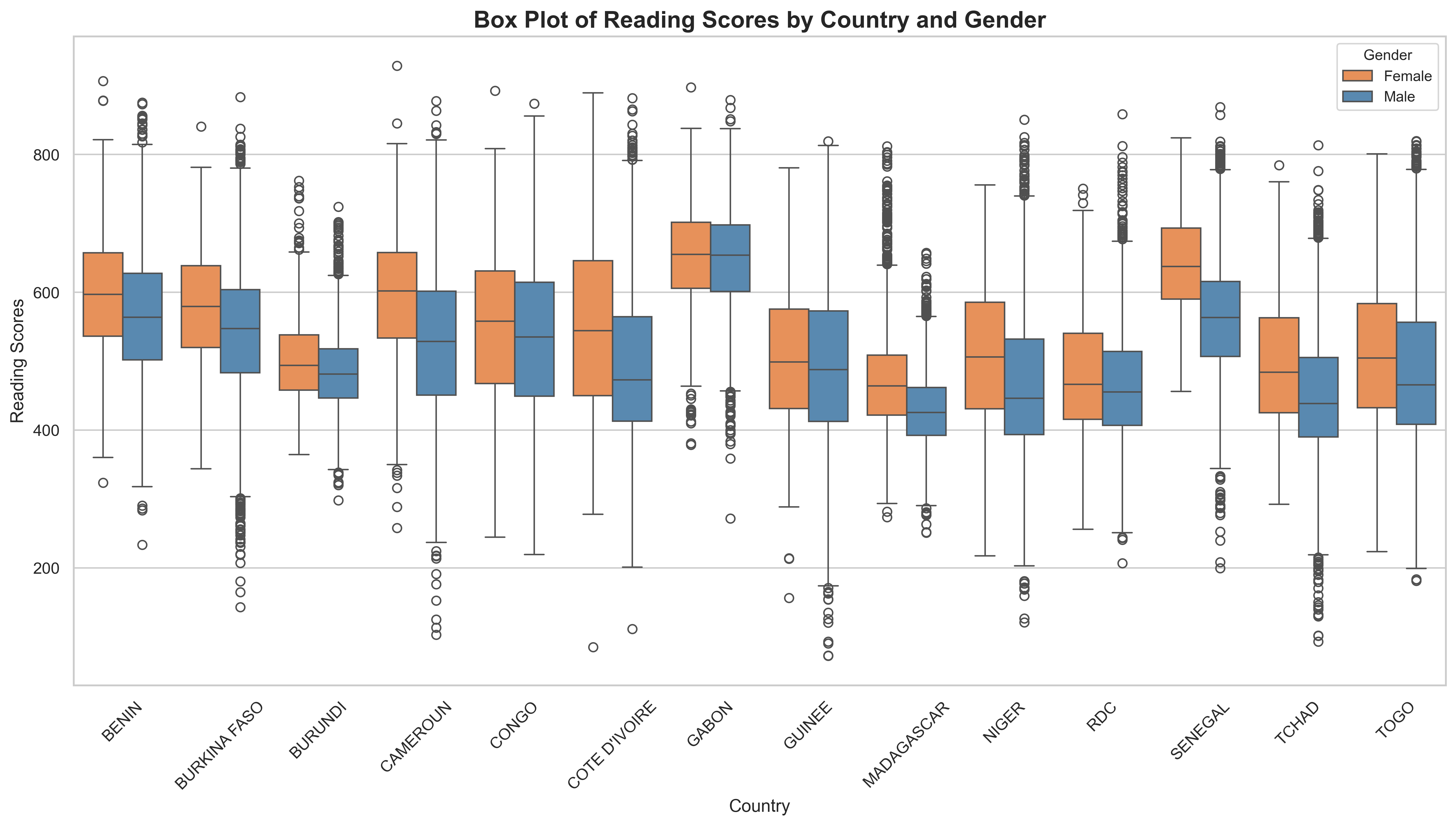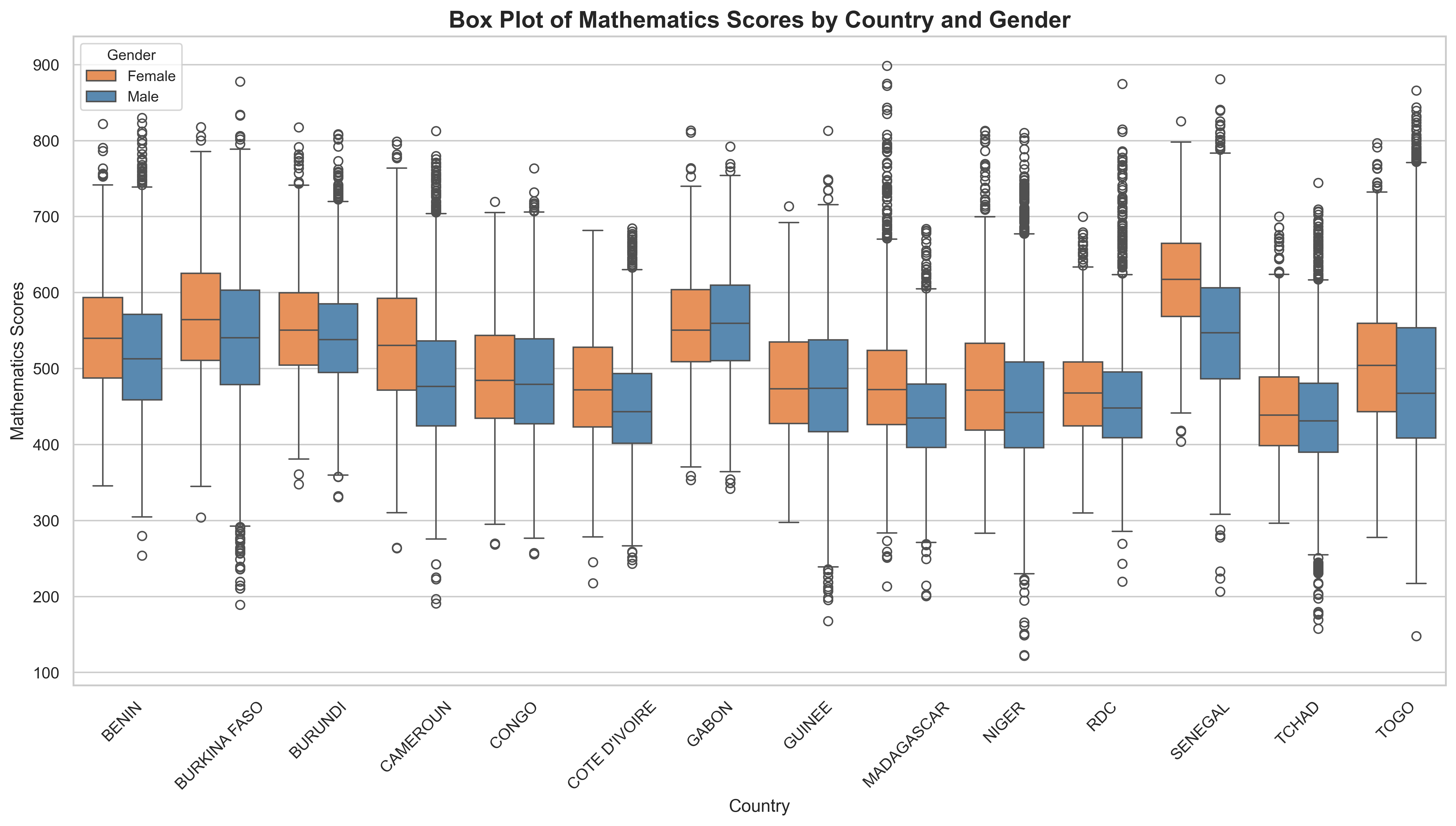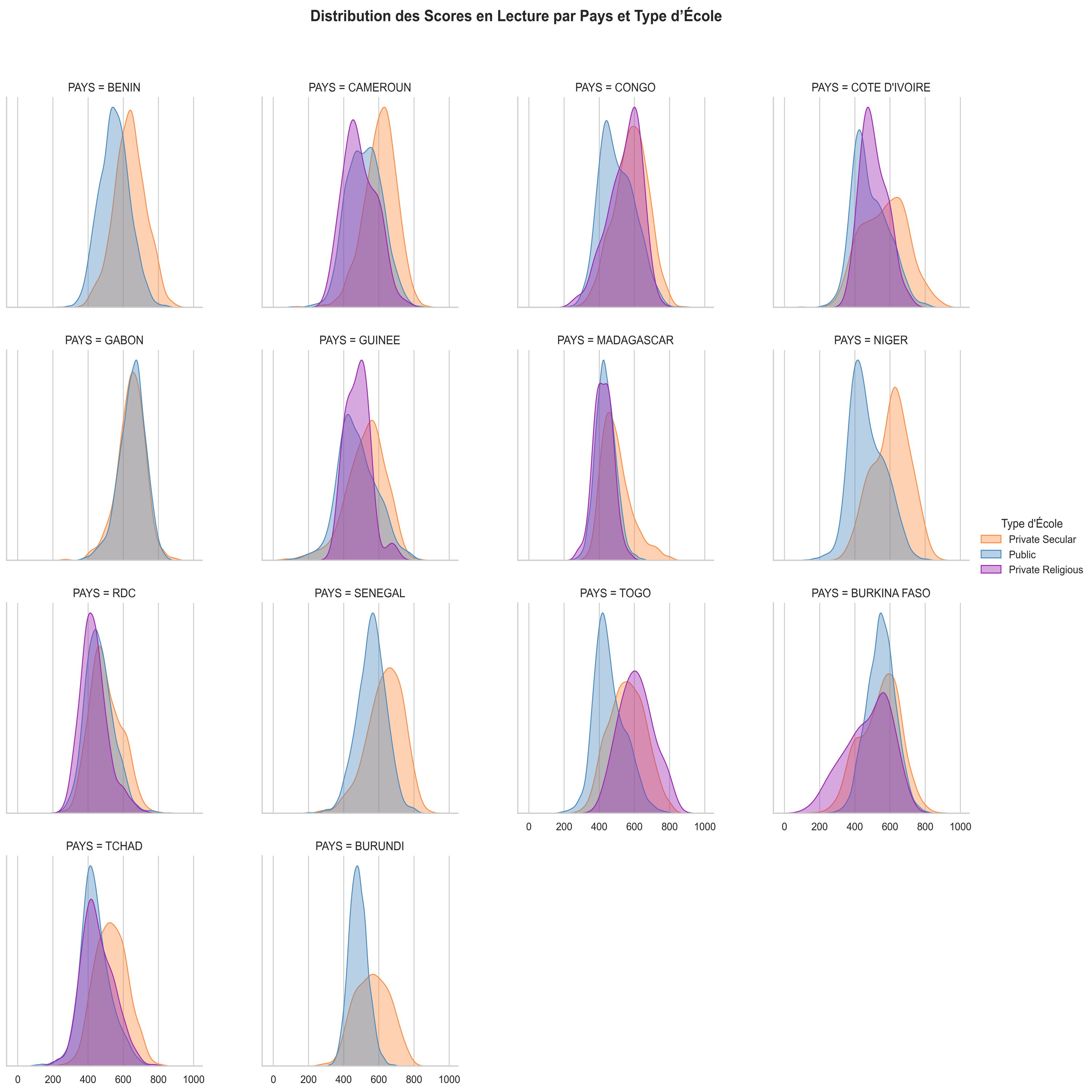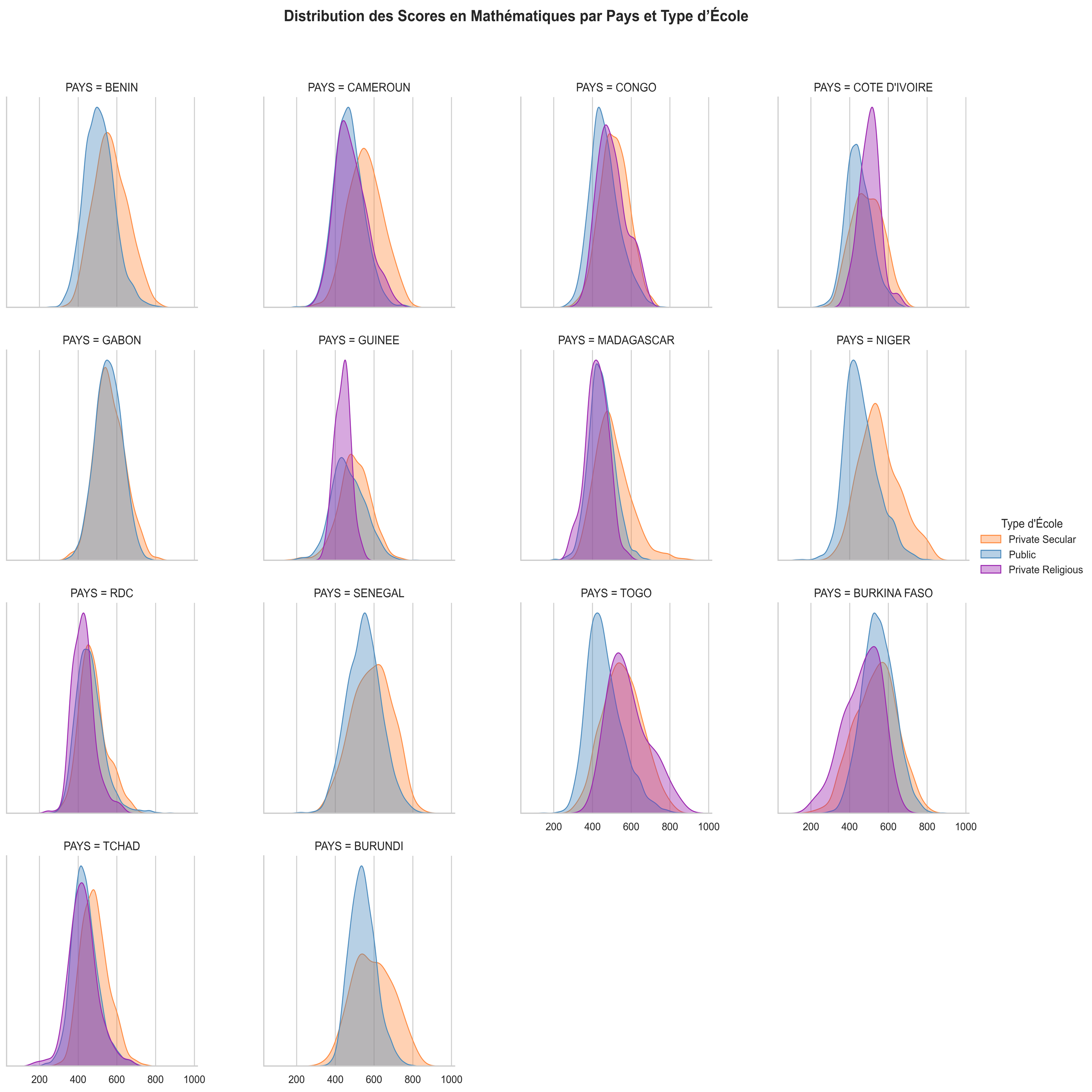Gender and School Type Differences in Learning Outcomes – PASEC 2019
📊 Exploring PASEC 2019 Data: Gender and School-Type Differences in Learning Outcomes
I explored the PASEC 2019 dataset, which assesses Grade 6 students’ performance in reading and mathematics across several Francophone African countries.
📈 Visualizations I Created
- ✅ Boxplots by gender and country to highlight performance differences.
- ✅ KDE (density) plots by school type (public, private secular, private religious).
- ✅ Facet grids to compare score distributions across 14 countries.
🛠️ Methodology
- Tools: Python, Pandas, Seaborn, Matplotlib
- Data Source: Programme d’Analyse des Systèmes Éducatifs de la CONFEMEN (PASEC 2019)
📷 Key Visuals
Gender Differences in Reading

Gender Differences in Mathematics

Reading Scores by School Type

Math Scores by School Type

📚 What the Literature Says
According to Miningou (2022):
- Girls tend to outperform boys in reading, while boys perform slightly better in mathematics.
- Using the Oaxaca-Blinder decomposition, the study shows that improving school infrastructure and increasing female teacher representation can reduce the gender gap.
However, PASEC 2019 remains underexplored in this area—offering great potential for future research.
🔬 Future Research Directions
- Compare trends between PASEC 2014 and 2019
- Investigate school-level interventions and regional disparities
- Study teacher characteristics, language of instruction, and urban-rural divides
📖 Reference
Miningou, É. W. (2022). Understanding the gender gap in learning outcomes in primary education: evidence from PASEC results.
International Journal of Gender Studies in Developing Societies, 4(3), 191–207.
💬 I’d love to hear your thoughts and feedback!
